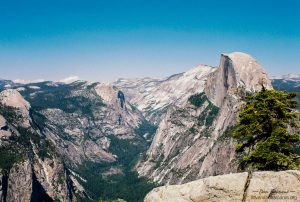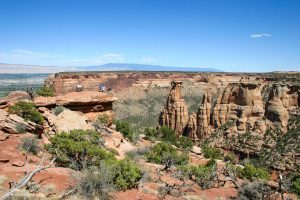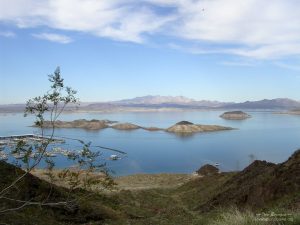Ever wondered why there are so many different types of parks in the National Parks system? National Park, National Monument, National Historic Park–what’s the difference?
National Park. The term “National Park” was the original name used for the first several tracts of land set aside by Congress to protect primarily scenic wonders from encroaching development. A National Park can only be created by an act of Congress. While there was no “minimum size” on early parks, Congress has generally reserved the term for very large tracks where resources must be protected to maintain the area’s significance to the nation, be it exceptional scenic or wildlife value. However, some of the most recent “National Parks” are actually very small such as Gateway Arch National Park. Activities in National Parks are correspondingly restricted to ensure preservation while still allowing access and enjoyment for visitors. Examples include Yosemite, Arches and Glacier National Parks preserved for their uniqueness and beauty, and Everglades National Park preserved for its immense but delicate wildlife habitat.
National Monument. Unlike a National Park which requires an Act of Congress, a National Monument can be unilaterally declared by the executive order of the President. This authority was first given to President Theodore Roosevelt by the Antiquities Act of 1906. President Roosevelt first used this power to protect several sites of ancient Puebloan ruins in the Southwest, as was intended by the act, but he tested its limits when he declared the Grand Canyon a National Monument amid uproars from many in Arizona. Similar unpopular declarations were made by President Franklin Roosevelt when he protected additional land around the Grand Tetons as “Jackson Hole National Monument” over the objections of local ranchers in 1943 and when President Jimmy Carter effectively doubled the acreage of the National Park System by declaring millions of acres in Alaska to be National Monuments in 1980 causing massive protests in Alaska. History, however, seems to have sided with the Presidents. Jackson Hole National Monument is now part of Grand Teton National Park, and the Alaskan Monuments have spawned no fewer than seven National Parks including Gates of the Artic, Glacier Bay, Katmai, Kenai Fjords, Kobuk Valley, Lake Clark and Wrangell-St. Elias. Not all National Monuments are managed by the National Park Service–some are managed by the Bureau of Land Management. Examples of National Monuments include Canyon de Chelly and Colorado National Monument.
National Memorial. National Memorials commemorate an important event or person, but the memorial site does not have to be tied directly to the event or person commemorated. Examples include DeSoto and Wright Brothers National Memorials.
National Historic Site. A National Historic Site preserves something singular and historical such as a building. The authority to declare a site is derived from the Historic Sites Act of 1935, and while a few sites have been declared by Secretaries of the Interior, most have been designated by Congress. An Example is the Dr. Martin Luther King, Jr. National Historic Site.
National Historical Park (or National Historic Park). A National Historical Park is similar to a National Historic Site, but is larger in scale, usually containing a series of related sites. Examples include Minute Man, Harpers Ferry and Colonial National Historical Parks. “Historic” is usually used when the park is dedicated to a single event; “historical” is typically used when park commemorates multiple events.
National Battlefield / National Battlefield Park / National Battlefield Site / National Military Park. You guessed it, these parks protect the sites of historic battles throughout US history. As a general rule most sites associated with the American Civil War are “Battlefield Parks” while most associated with the American Revolution are “Historical Parks.” Examples include Gettysburg National Military Park and Richmond National Battlefield Park.
National Cemetery. The National Parks Service protects 14 National Cemeteries including the most famous, Arlington National Cemetery.
National Seashore / National Lakeshore. These parks protect primarily undeveloped areas along major bodies of water. Like National Parks, they help protect many areas from encroaching development, but they usually allow a wide range of recreational activities National Parks may not. An example is Cape Hatteras National Seashore.
National River / Wild and Scenic River. These parks preserve strips of land surrounding stretches of un-dammed waterways. The first was established in 1964, and more followed in 1968 with the Wild and Scenic Rivers Act. An example is the New River Gorge National River.
National Preserve. National Preserves are designed to protect certain natural resources without the full restrictions associated with National Parks. The natural resources can range from animals to wetlands and include examples such as Big Cypress National Preserve. National Preserves can be associated with National Parks such as Denali National Park and Preserve and Great Sand Dunes National Park and Preserve.
National Recreation Area. National Recreation Areas typically govern large reservoirs. Some NRAs are managed by the National Park Service, but others are managed by the Bureau of Land Management or the US Forest Service. One NRA, Cuyahoga Valley, has been re-designated a National Park. Other examples of NRAs include Curecanti and Lake Mead National Recreation Areas.
National Forest. A National Forest is managed by the US Forest Service (Department of Agriculture), NOT the National Park Service (Department of the Interior). It is primarily used to designate areas where the growth of timber and development is managed. The strategy for protection of a National Forest can be summarized by the slogan “Land of Many Uses,” and a wide range of recreational and commercial activities are usually permitted under certain restrictions. In the past, there have been political battles between advocates of National Forests where exploitation is allowed and those advocating more strict protection such as the battle surrounding the creation of Olympic National Park in Washington state.
National Conservation Area. A National Conservation Area is managed by the Bureau of Land Management (BLM) which is separate from the National Park Service but also under the Department of the Interior. These lands are designated by Congress and are protected for their “exceptional scientific, cultural, ecological, historical, and recreational value.” Examples include Red Rock Canyon National Conservation Area in Nevada.






